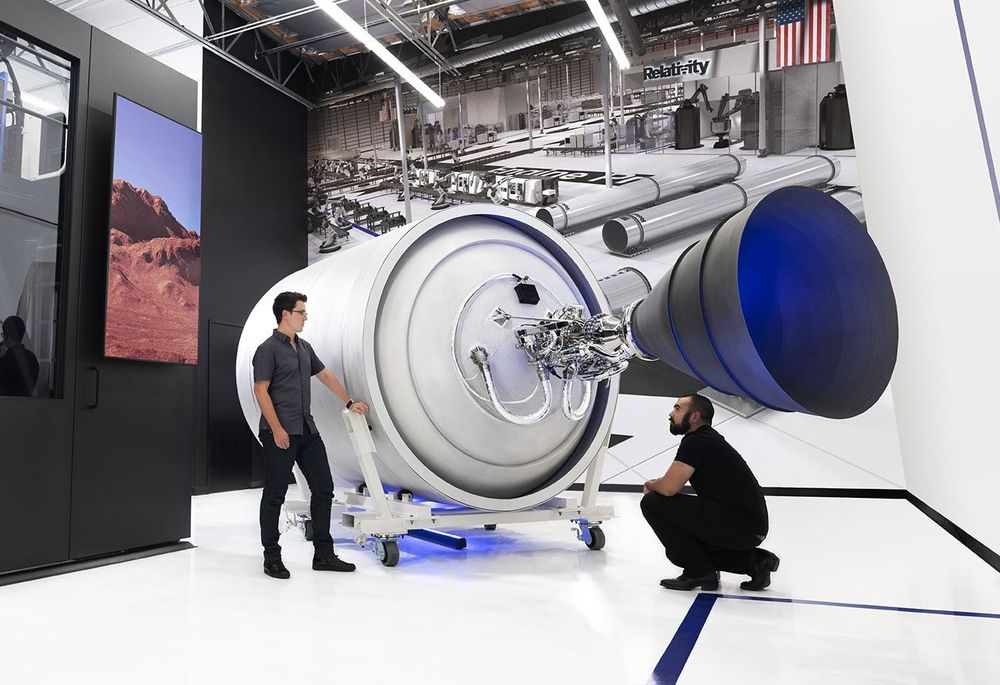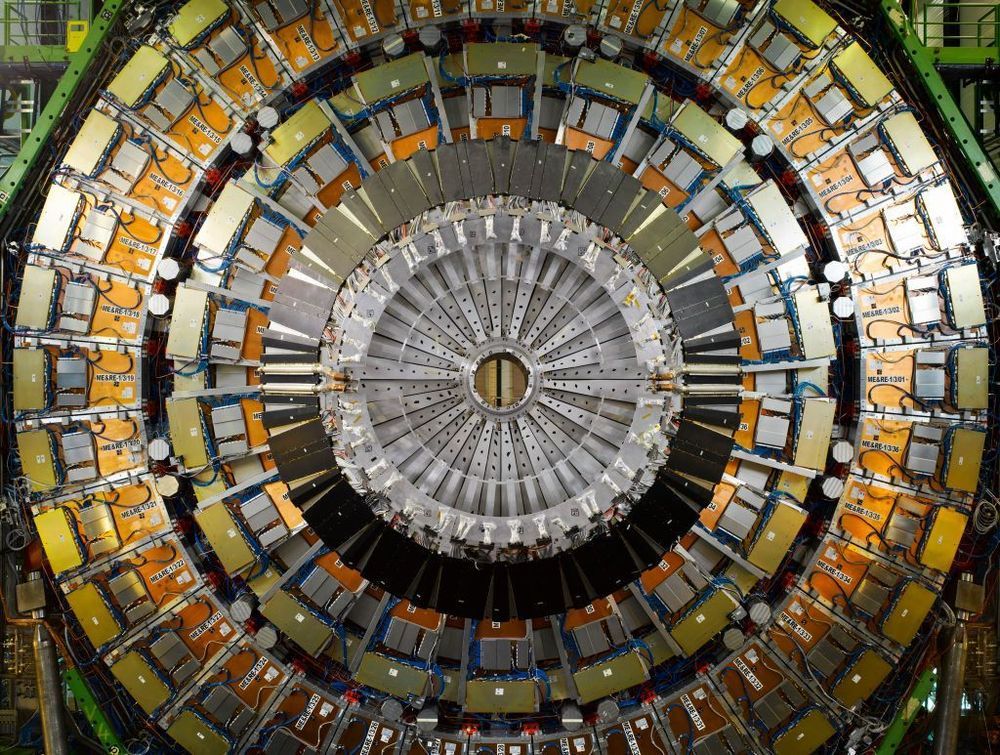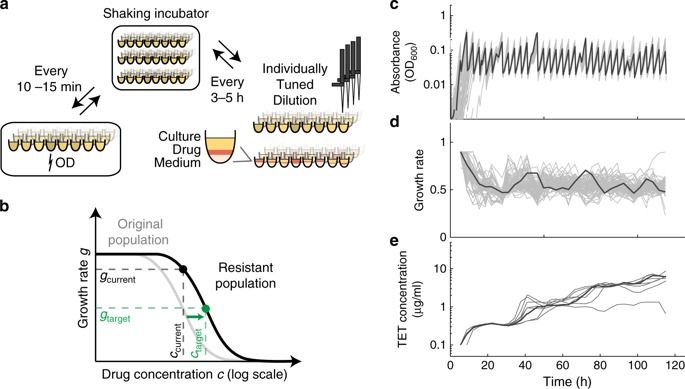To create artificial general intelligence, we need to study the brain.
Get the latest international news and world events from around the world.

3D rocket printer Relativity signs deal with Iridium and plans to build a California launchpad
Relativity Space, a growing startup that aims to almost entirely 3D-print rockets, on Wednesday announced it struck another major launch deal, as well as an agreement with the U.S. Air Force, to build a launchpad on the California coastline.
The Los Angeles-based rocket builder signed an agreement with satellite operator Iridium Communications, to launch up to six satellites as needed as early as 2023. Over the course of more than half a dozen launches with SpaceX, Iridium completed its second-generation satellite constellation in January 2019, with 66 operational satellites and 9 spares in orbit.
The Iridium deal means Relativity now has agreements to launch for five different companies, having previously announced contracts with Canadian satellite communications operator Telesat, California-based Momentus, Thai satellite broadband company mu Space and Seattle-based Spaceflight Inc. All the contracts have remarkably come before Relativity’s first launch, which is scheduled to happen before the end of 2021.

UK to launch world’s largest genetic study into chronic fatigue syndrome
The world’s largest genetic study into chronic fatigue syndrome is to be launched in the UK after receiving £3.2m of funding from the Medical Research Council and National Institute for Health Research.
The research aims to shine a light on the debilitating long-term condition, about which little is known, by collecting DNA samples from 20,000 people who have CFS, also known as myalgic encephalomyelitis (ME).
CFS is believed to affect about 250,000 people in the UK and has been estimated to cost the economy billions of pounds each year. Individuals experience exhaustion that is not helped by rest, with one in four so severely affected they are unable to leave the house and, frequently, unable to leave their bed. Other symptoms include, pain, mental fogginess, light and noise sensitivities, as well as trouble with memory and sleep. No effective treatment exists.

Is Another Monster Particle Accelerator Really Such a Good Idea?
The governing council of the European Organization for Nuclear Research, known internationally as CERN, wants to build a brand new, bigger-than-ever $23.6 billion particle collider. At one time, CERN’s Large Hadron Collider (LHC) made news for costing a mere $5 billion. Is the escalating cost of these colliders worth it for the research scientists are able to do?
At least one prominent physicist says no. Sabine Hossenfelder, a theoretical physicist at the Frankfurt Institute for Advanced Studies, argues in Scientific American that bigger and bigger particle collider schemes have run out of room to make meaningful progress.


Saharan dust drifting toward Colorado
Dust is on the way to the United States this week making the more than 6,000-mile journey from the Sahara Desert.
This might seem to work against typical weather patterns, but dust in the United States from the Sahara happens every year. While it may not be abnormal to see the Saharan dust make its annual journey to the United States, we are expected to see more of it than usual.
Tiny individual dust particles combine to make a large plume so big that it can be picked up on satellite images and even be seen from the International Space Station.

In mice, scientists decode how the brain recognizes scent
New research untangles the complex code the brain uses to distinguish between a vast array of smells, offering a scientific explanation for how it separates baby powder from bleach, lemon from orange, or freshly cut grass from freshly brewed coffee.
A single scent can trigger a complex chain of events in what’s known as the olfactory bulb, the brain’s control center for smell. To unravel the intricacies of that process, researchers in the U.S. and Italy turned to a technique known as optogenetics, which uses light to control neurons in the brain. In research on mice, they used light to trick the brain into thinking it smelled a particular scent, then studied brain activity to understand the role different neurons play in a mouse’s ability to recognize that scent. Their findings were published Thursday in Science.
When we encounter a certain smell, it stimulates a specific pattern of activity among tiny spheres known as glomeruli, which are found in the olfactory bulb. The odor plays across these glomeruli like a melody across piano keys: Just as a tune is made distinct by which keys are pressed and at what point in the melody, a scent is made distinct by which glomeruli are activated and in what order.

Axiom Space Is Offering 10-Day Trips To The International Space Station
Axiom Space will now let you book a unique all-inclusive vacation to the Internation Space Station for a casual US$55 million per seat.
Having signed a contract with SpaceX – because who else? – the company has effectively secured permission for a fully-trained commander and three “private astronauts” (read: bored & wealthy operators) to travel via one of SpaceX’s Crew Dragon capsules.
“This history-making flight will represent a watershed moment in the march toward universal and routine access to space,” says Axiom CEO, Michael Suffredini.

Highly parallel lab evolution reveals that epistasis can curb the evolution of antibiotic resistance
Genetic perturbations that affect bacterial resistance to antibiotics have been characterized genome-wide, but how do such perturbations interact with subsequent evolutionary adaptation to the drug? Here, we show that strong epistasis between resistance mutations and systematically identified genes can be exploited to control spontaneous resistance evolution. We evolved hundreds of Escherichia coli K-12 mutant populations in parallel, using a robotic platform that tightly controls population size and selection pressure. We find a global diminishing-returns epistasis pattern: strains that are initially more sensitive generally undergo larger resistance gains. However, some gene deletion strains deviate from this general trend and curtail the evolvability of resistance, including deletions of genes for membrane transport, LPS biosynthesis, and chaperones. Deletions of efflux pump genes force evolution on inferior mutational paths, not explored in the wild type, and some of these essentially block resistance evolution. This effect is due to strong negative epistasis with resistance mutations. The identified genes and cellular functions provide potential targets for development of adjuvants that may block spontaneous resistance evolution when combined with antibiotics.

Scientists Declare an Unprecedented ‘Anthropause’ Due to The Pandemic
The current pandemic isn’t just affecting humans, it’s also impacting wildlife. As the world locks down to avoid further spread of the devastating coronavirus, there are suddenly far fewer cars on the road, planes in the sky and ships in the water. And nature has surely noticed.
Recently, pumas have been spotted ambling down the streets of Santiago, Chile and coyotes have been combing through San Francisco, while rats have grown increasingly aggressive in their hunt for ever-dwindling scraps, and starving urban monkey gangs brawl over diminishing resources.
Some people started calling it the ‘Great Pause’. Now, scientists have come up with a more precise and technical way to describe these exceptional circumstances, outlining what we might learn from their effects.